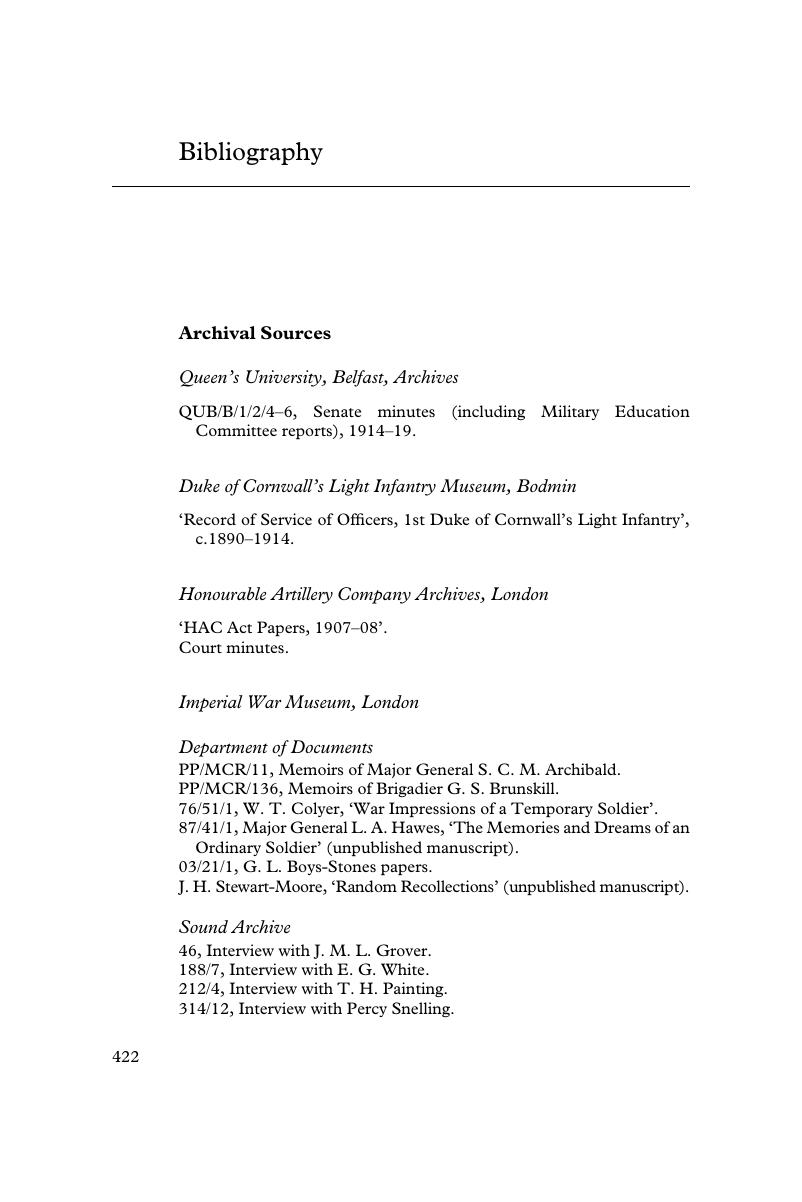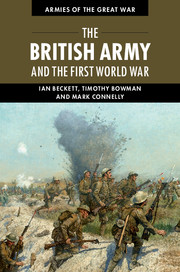Book contents
- The British Army and the First World War
- The British Army and the First World War
- Copyright page
- Contents
- Figures
- Maps
- Introduction
- 1 The Pre-War Army
- 2 The Officer Corps
- 3 A Nation in Arms
- 4 Citizen Soldiers
- 5 British Strategy and the British Army
- 6 The Western Front, 1914
- 7 The Western Front, 1915
- 8 The Western Front, 1916
- 9 The Western Front, 1917
- 10 The Western Front, 1918
- 11 Beyond the Western Front
- Conclusion
- Bibliography
- Index
- References
Bibliography
Published online by Cambridge University Press: 04 May 2017
- The British Army and the First World War
- The British Army and the First World War
- Copyright page
- Contents
- Figures
- Maps
- Introduction
- 1 The Pre-War Army
- 2 The Officer Corps
- 3 A Nation in Arms
- 4 Citizen Soldiers
- 5 British Strategy and the British Army
- 6 The Western Front, 1914
- 7 The Western Front, 1915
- 8 The Western Front, 1916
- 9 The Western Front, 1917
- 10 The Western Front, 1918
- 11 Beyond the Western Front
- Conclusion
- Bibliography
- Index
- References
Summary

- Type
- Chapter
- Information
- The British Army and the First World War , pp. 422 - 461Publisher: Cambridge University PressPrint publication year: 2017



